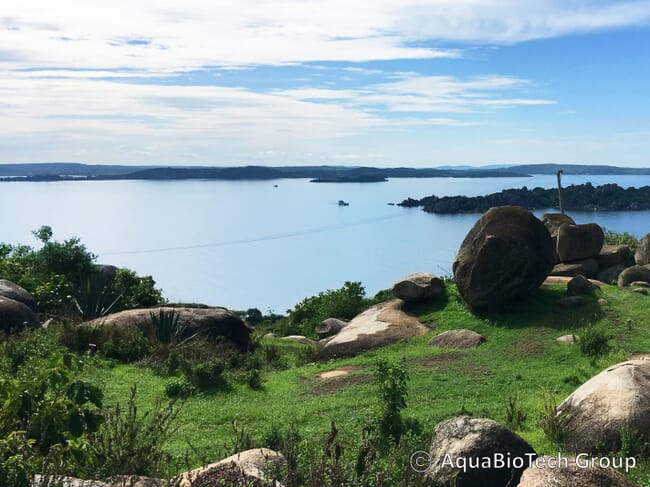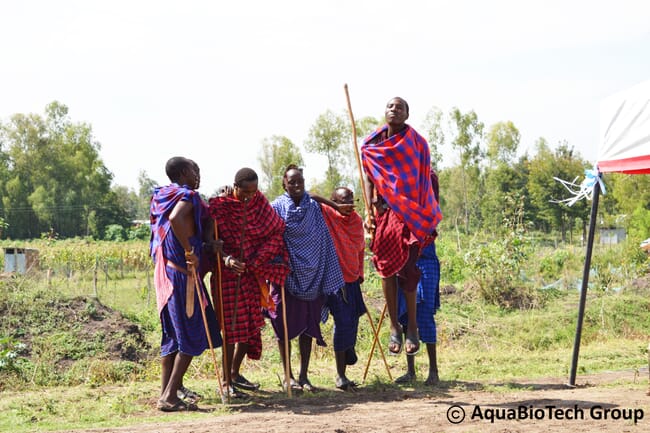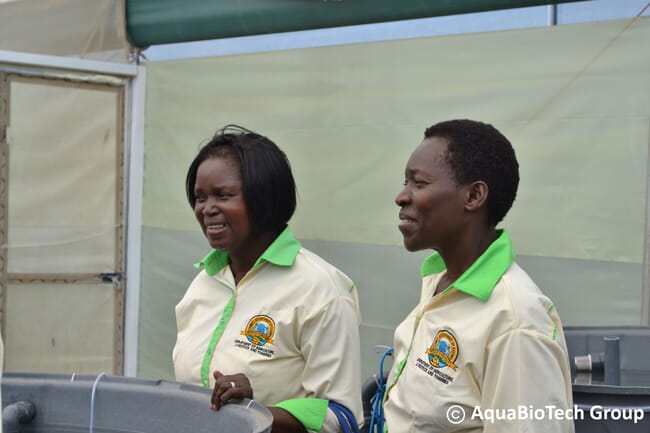Lake Victoria in Eastern Africa, the second largest freshwater lake in the world, is a vital resource for the surrounding countries, providing communities with water, food and employment. The fishery sector is the main employer in Lake Victoria basin, being a major source of income for the population and an important part of the national economies in the region. However, the lake is under pressure due to overfishing, water shortages and severe pollution.

Promoting the use of more sustainable aquaculture systems, such as recirculating aquaculture systems (RAS), in the region is now more important than ever and can provide livelihood opportunities while reducing the sector’s environmental impact on the lake.
Currently, the aquaculture sector in Kenya, Tanzania and Uganda mainly consists of small-scale farmers using earthen ponds to grow their fish – largely tilapia, but some catfish too. These are low-maintenance, easily managed systems but can only sustain low stocking densities.

Meanwhile, most fish hatcheries in the basin use low-level flow-through culture systems to ensure sufficiently high water quality for egg incubation and larval rearing. However, in many countries in other parts of the world the adoption of innovative technologies has contributed to the growth of the aquaculture sector. RAS incorporate water treatment and reuse 90 to 95 percent of the water. RAS offer a variety of important advantages compared to open-pond culture, such as reduced water and land requirements, environmental control, year-round operation, waste-management control and food-safety benefits. However, around Lake Victoria, only a handful of operators currently use RAS.
VicInAqua, a project under the EU Horizon 2020 programme with 11 partners from Africa and Europe, has developed an RAS tilapia hatchery in Kisumu, Kenya. The design, installation and construction of the RAS for the pilot was undertaken by my organisation, the AquaBioTech Group. Our goal was to develop a hatchery that can serve as a demonstration and training facility, while also providing quality fingerlings to fish farmers. We were also leading the work package on the construction of the integrated pilot system and design of an upscaled system. The hatchery has the capacity to produce 25,000 fingerlings per month to supply pond aquaculture in the area and we designed it to be a flexible, scalable and modular system which can be adapted to needs of the operator – if we can persuade more aquaculture operators to use RAS in hatcheries it will help improve local seed supplies as well as lessen nutrient discharge into the lake.
The hatchery, which runs predominantly on renewable energy (solar and biogas), was completed at the beginning of the year and the first fingerlings were distributed to grow-out farmers in April. Another innovative element of the project is the online monitoring system that enables the farmers to access farm data in real-time and act quickly when something is out of the ordinary. Unique to the VicInAqua system is that the top-up water used in the RAS is treated wastewater. The wastewater is cleaned by a membrane bioreactor (MBR), a novel wastewater treatment method that utilises membranes to filter the water. This allows waste water that normally ends up in the lake to be utilised for fish production.
The purpose of the project is to demonstrate the advantages of adopting these technologies, execute experiments and finally come up with a financially feasible upscaled RAS design, ready for the African market. The technology development and demonstration at pilot scale can then be combined with capacity building of local and regional actors. The pilot hatchery is used by the local partner – the Department of Livestock, Agriculture and Fisheries (DALF) of Kisumu county, as a training and demonstration facility to promote the aquaculture sector and increase awareness, knowledge and skills for fish farmers.

During the course of the project, which runs from the start of June 2016 to the end of May 2019, I visited Kisumu four times and it was very rewarding to be involved throughout the lifetime of the project – starting with the design, then installation of the systems and now running the hatchery. I got to know the local team and felt very proud when I saw a video of the first batch of fingerlings they produced.
Throughout the project, several capacity-building activities were carried out in the region: study visits, a student-exchange programme, the development of an online knowledge platform and technical training sessions. These were intended to raise interest in the functioning of the new VicInAqua concept and to guarantee a technical understanding in terms of operation and maintenance of potential end users of the different components. The AquaBioTech Group conducted training sessions on RAS in each of the countries around Lake Victoria; the first session took place in Mwanza, Tanzania, the second one in Kisumu, Kenya and the last one in Kampala, Uganda.
The training focused on RAS and special aspects of a tilapia hatchery. It consisted of various sessions – covering RAS design, production planning, system operation and the VicInAqua system. In total 100 people were trained. Among the trainees were farmers, researchers and policy makers. One goal of the project was to encourage women to engage in aquaculture and therefore we ensured that at least 30 percent of the trainees were women.
The reactions and involvement of the people showed that there is considerable interest in the technologies being used and considerable potential for the development of aquaculture in the region.
As Susan Clare Adhiambo, from DALF, explains: “If the [RAS] technology is adopted by fish farms or local authorities around Lake Victoria it would reduce pollution loads from the waters getting into the lake. It would also lead to increased production of fish through aquaculture, contributing to improved food security for the lake’s populations. VicInAqua also creates employment as the technology is customised by using locally available materials and resources.”
Lanta Daniel, from Tanzanian partner Science, Technology and Innovation Policy Research Organization (STIPRO), agrees. “Definitely as a country we will benefit in terms of environmental conservation especially in water bodies. Moreover, areas that are not connected to the national grid will benefit from the VicInAqua concept and its own power-generating system,” she says.

The project team also invested a lot of time in training the staff of DALF to enable them to operate the facilities so that they can provide tilapia fingerlings to the nearby farmers and continue training students, government officials and farmers in the hatchery over the coming years. And it is encouraging that the pilot project – and its legacy – will continue to operate after VicInAqua ends.
As Pauline Nakyewa, from Ugandan partner National Agricultural Research Organisation (NARO), reflects: “Uganda and Lake Victoria have a lot to benefit.” Among the benefits of a clean lake he includes “increased wild fish catches; healthy human populations”, and, “Among the benefits of conscious water management: agricultural production sustained all year round; bigger profit margins for processing industries due to decreased water consumption.”
Moreover, together with the local partners, we now are applying for future projects to ensure the facilities established in VicInAqua – and the lessons learned from them – continue to develop. Thus we are ensuring a long-term, environmentally sensitive approach to aquaculture in the region.
Acknowledgements
This research has received funding from the European Union’s Horizon 2020 research and innovation programme under grant agreement number 689427 for the project VicInAqua.



